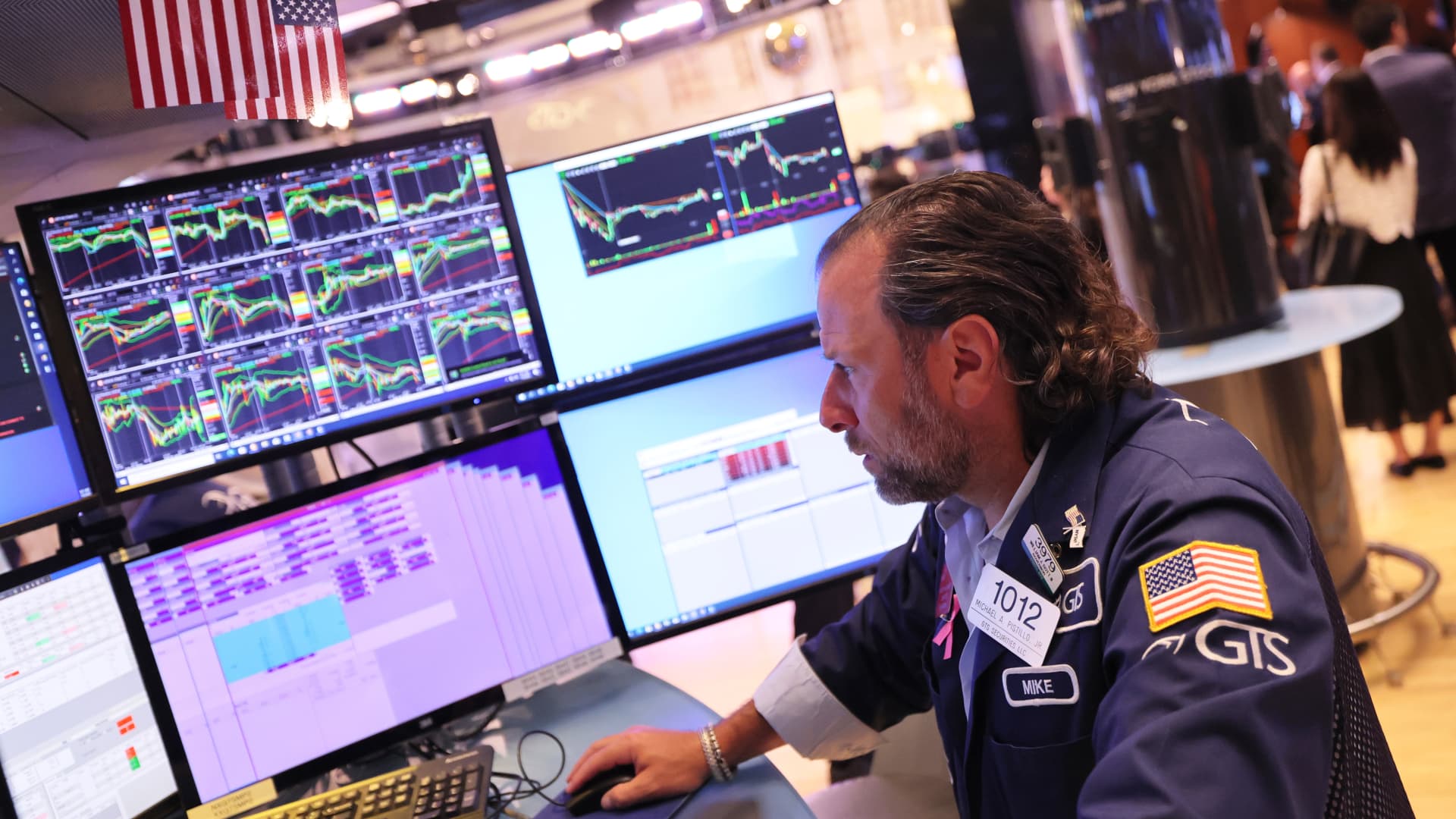CNBC Daily Open: Worries over rate cuts persist

Traders work on the floor of the New York Stock Exchange during morning trading on July 06, 2023 in New York City.
Michael M. Santiago | Getty Images
This report is from today’s CNBC Daily Open, our international markets newsletter. CNBC Daily Open brings investors up to speed on everything they need to know, no matter where they are. Like what you see? You can subscribe here.
What you need to know today
Nikkei hits record high
Japan’s Nikkei hit a record high Thursday, while other markets in the region also advanced. The Nikkei 225 spiked 2% to close at 39,098.68, breaching the previous record high of 38,915.87 reached in 1989. Wall Street ended mixed as investors digested the U.S. Federal Reserve’s minutes from the January meeting. The S&P 500 gained 0.13%, while the Dow rose 0.13%. But the Nasdaq Composite slid for a third session in a row.
AI and chip stocks rally
Artificial intelligence and semiconductor chip stocks rallied after Nvidia’s quarterly earnings topped estimates. Shares of Nvidia supplier Taiwan Semiconductor Manufacturing Company soared much as 2% in early trade Thursday.
Fed’s caution
Minutes from the Federal Reserve’s last meeting showed central bank officials expressed caution about lowering interest rates too quickly. Members also emphasized the importance of “carefully assessing” incoming data in judging whether inflation is moving down sustainably to 2%.
China boosts Asia travel
Chinese tourists are driving Asia-Pacific’s travel boom, with flight demand set to match pre-pandemic levels this year. Travel demand was at about 83% of 2019 levels in December last year, up from just 57% in January, data from the International Air Transport Association showed.
[PRO] Where will yields go?
Given the uncertain path of U.S. interest rates, the question of how it will affect yields and the stock market has been investors’ top focus. Morgan Stanley Investment Management’s Jim Caron weighed in on the issue and noted the 10-year Treasury yield is likely to hover between 5% and 5.5%.
The bottom line
The January minutes made it pretty clear that Fed officials were wary of cutting rates too soon.
While most members believed rates were “likely at their peak,” there was still uneasiness over the inflation picture.
The Fed remained “highly attentive” to inflation risks as officials worried whether progress might stall if consumer spending stayed strong.
“As an upside risk to both inflation and economic activity, participants noted that momentum in aggregate demand may be stronger than currently assessed, especially in light of surprisingly resilient consumer spending last year,” the minutes said.
Prior to the meeting, traders had been pricing in a high chance of rate cuts beginning as early as March. That hope has since faded, now most expect the first rate cut to come around the middle of year.
It’s also important to note the meeting was held before the release of the very strong January jobs report and the surprisingly hot consumer and producer price data.
“After those numbers, policymakers will feel vindicated and in even less of a hurry to start easing,” wrote Ian Shepherdson, chief economist at Pantheon Macroeconomics.
“The nature of turning points, however, is that things can change quickly, and we expect the labor market and inflation data by the time of the May meeting to signal that the Fed needs to ease.”
Investors further worry if the central bank maintains an overly restrictive stance for too long that could derail the economy and lead to a bumpier landing.









